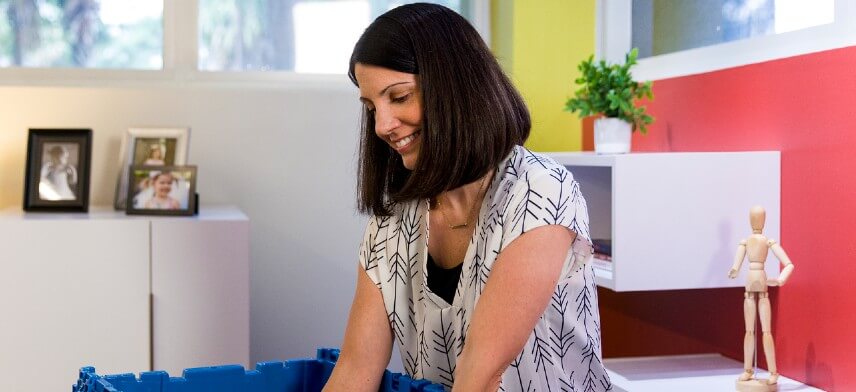
How to Return Employees to the Office in 2020
Are you getting ready to bring your employees back into the office after months of working remote due to the COVID-19 pandemic? Find out how businesses are taking a systematic approach to preparing their employees and workspaces.
In early 2020, businesses around the nation were met with an unexpected challenge—move all employees who can work from home to be remote. For many, setting up an infrastructure to support this remote work had to be done immediately. The process was often messy with a lot of trial and error to get employees up and running at their homes. However, your back to work strategy doesn’t have to be that way. Suddath® created a comprehensive guide of everything you need to do to effectively prepare your space and employees to return to the office.
Bringing Employees Back to Work
As organizations around the country are trying to figure out how to best bring remote employees back into the office, there’s a variety of factors that must be considered. From reengineering workspaces to meet social distancing guidelines, to ensuring employees feel confident and safe in their environment, there’s a laundry list of challenges companies must overcome.
One popular approach is bringing employees back in phases, starting with those whose role is most disrupted by working remote. This phased approach gives organization an opportunity to pilot their program and make adjustments before the entire employee population is back in the office. Another challenge offices face is how to monitor illness within their workforce. Some businesses have already implemented temperature checks for all employees, but experts warn these measures shouldn’t be taken alone because up to a quarter of COVID-19 patients don’t develop a fever.
Another approach is not bringing some employees back into the office at all. Nearly 75% of CFOs plan to shift some previously onsite employees to permanently remote positions after COVID-19, according to a Gartner survey from April 2020.
Preparing Your Space
Companies must start by taking inventory of how many employees will be coming back into the office, and then consider what changes need to be made to their space based on their new or temporary occupancy. Some may need to remove desks, chairs and other items to meet social distancing requirements, and therefore will need short-term storage. Others may be able to rearrange their office to keep employees six feet apart by moving desks to face different directions and relocating items to unused spaces.
For conference rooms, break rooms and other shared spaces, experts suggest using signage to help employees maintain a six-foot distance as well as designate doors as entrance and exit, stairwells as up and down, and hallways as one way or divide traffic to reduce interaction. Removing chairs to ensure employees keep a six-foot distance is also recommended for these spaces.
Wiping down shared spaces is another way to help combat the spread of the virus. You’ll want to schedule cleaning services prior to your employees coming back to the office to ensure the area is sanitized. Many companies are also looking at replacing soft surfaces like couches with hard furniture that’s easier to clean or consistently having soft surfaces professionally cleaned. Adding sanitary stations to entrances, which can include hand sanitizer, foams, wipes and other no-water sanitizing options, is another way to help keep employees protected.
These suggestions just scratch the surface of ways organizations can modify, de-densify and make their offices safer. Download Suddath’s Back to Work Planner for a comprehensive look at how to prepare your office space, including interactive checklists.
Preparing Your Employees
While the logistics of preparing your workspace for your employees to return is important, it is equally important to ensure your employees feel comfortable in their new environment. Start communicating your plan for bringing employees back into the office at least two weeks before you plan to do so. This will give employee enough time to speak to their managers about any concerns, align childcare, if necessary, and organize their schedule to efficiently re-enter the office. Having an organized system to return employees and their equipment to the office can also help ease the transition.
You’ll want to communicate the important changes you’ve made to the office, including where employees can find sanitary stations, how you’re creating social distance, any expectations you’ll have for them wearing personal protective equipment (PPE) and how you’ll handle sick leave.
Ultimately, organizations want to try to make the shift from remote working back into the office as streamlined and smooth as possible for employees. For more in-depth information, download Suddath’s Back to Work Planner for a step-by-step guide with interactive checklists and visual representations to make this transition easier. Or, contact our team to get professional advice and services.
